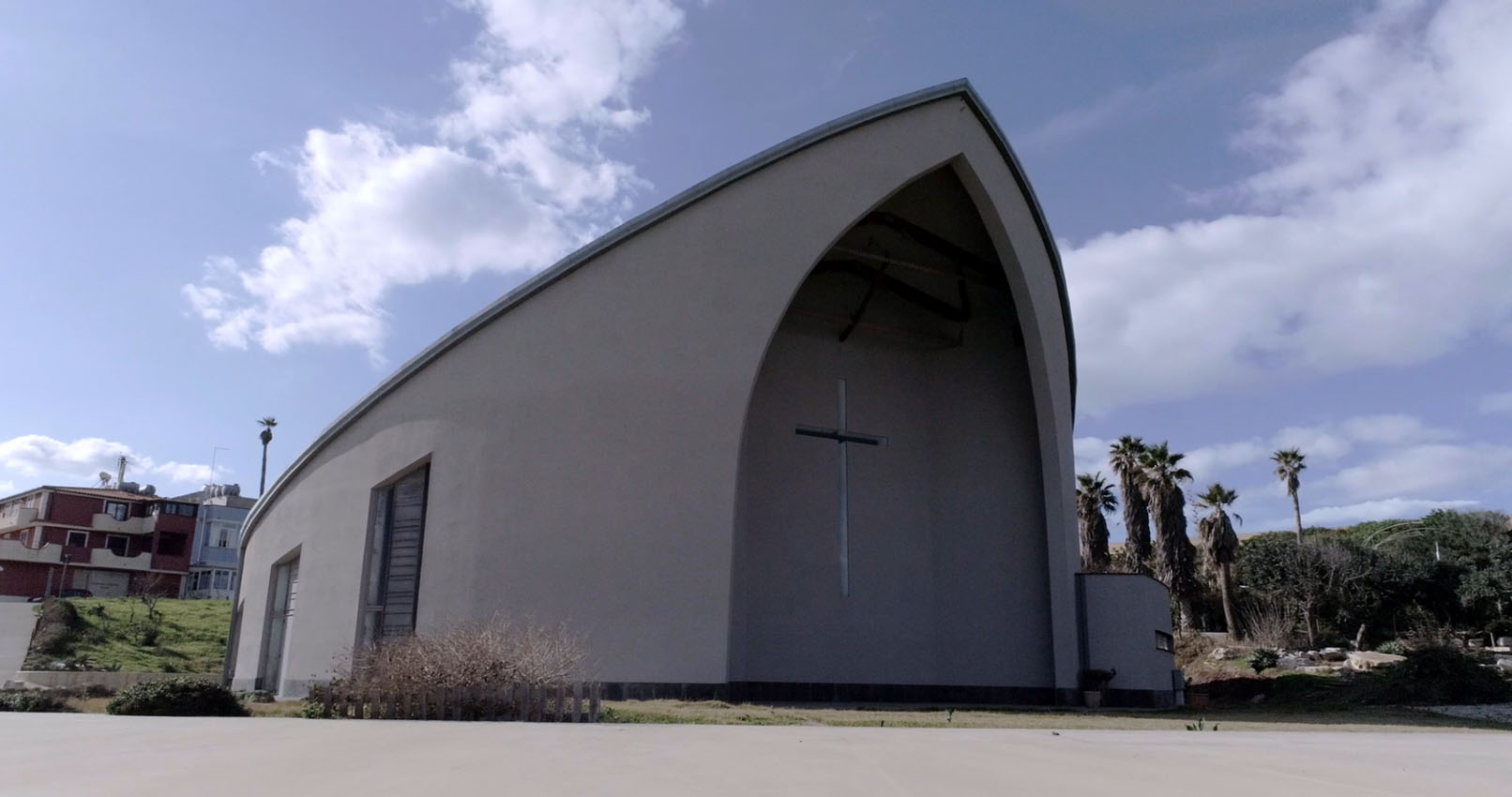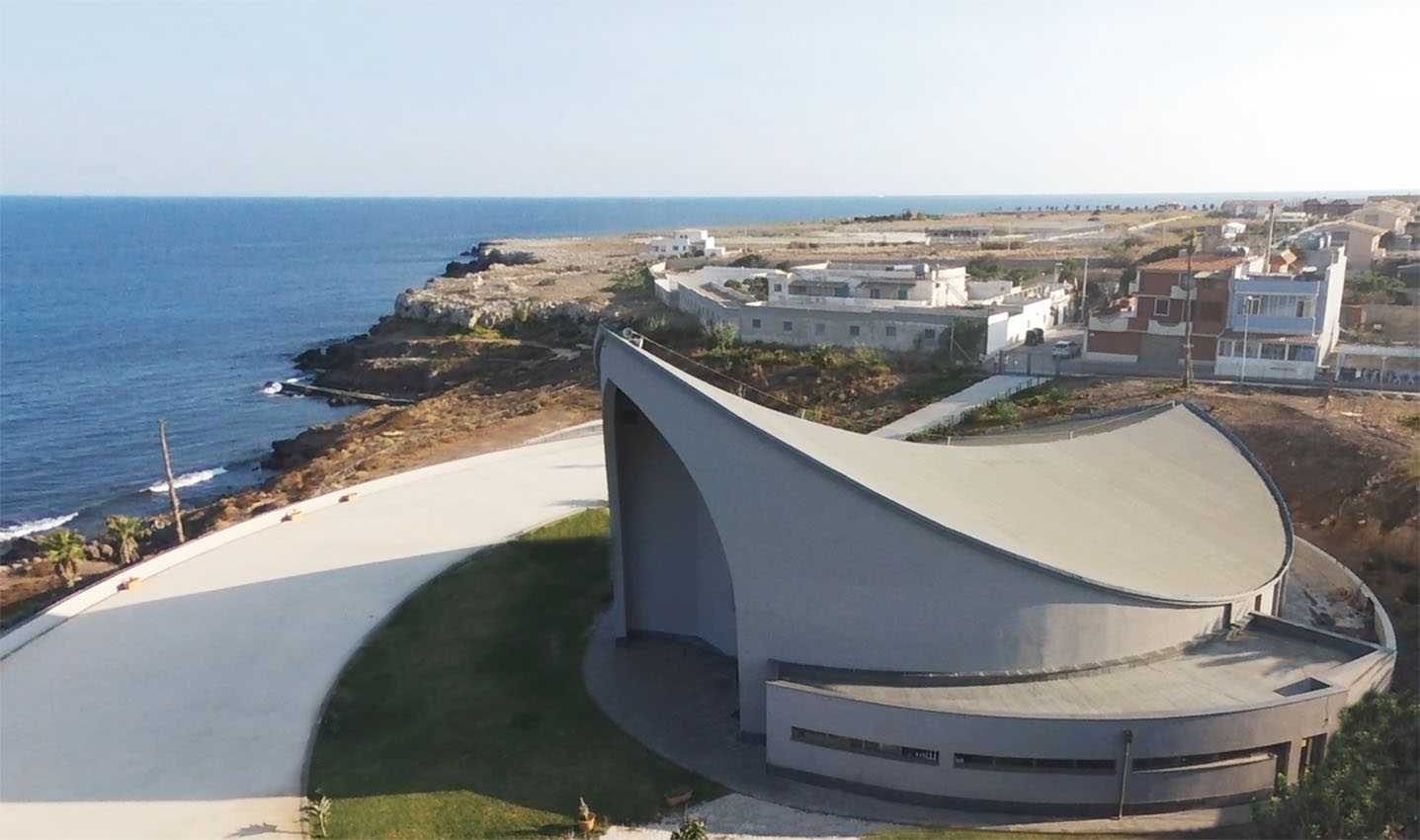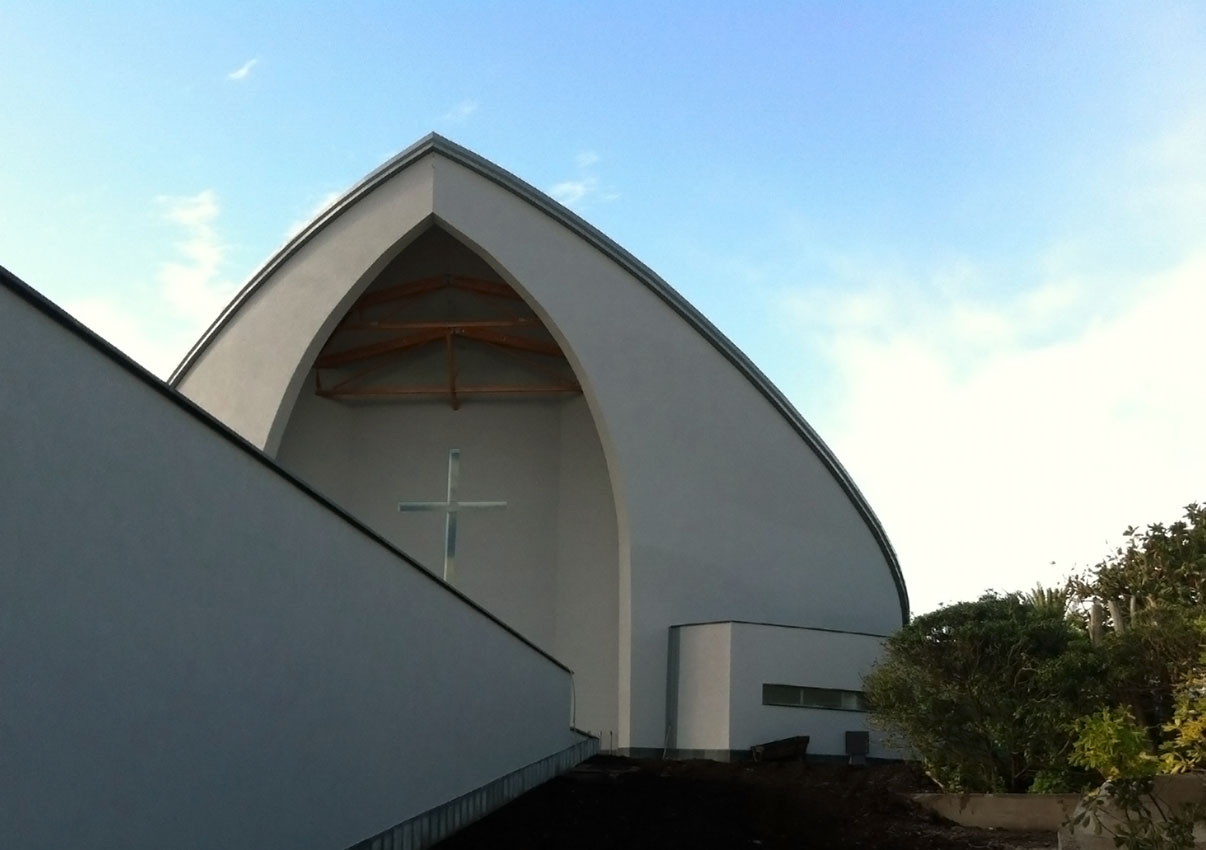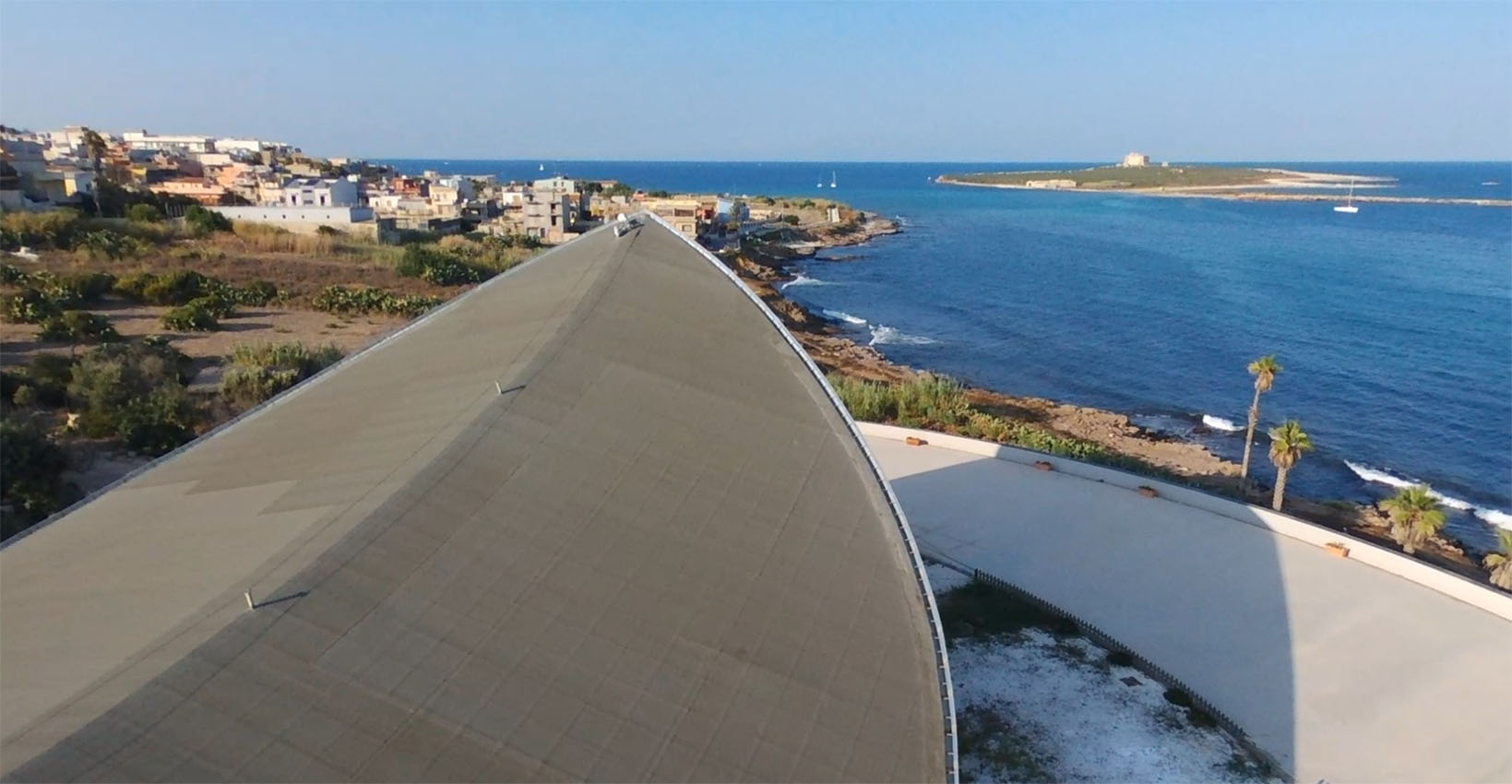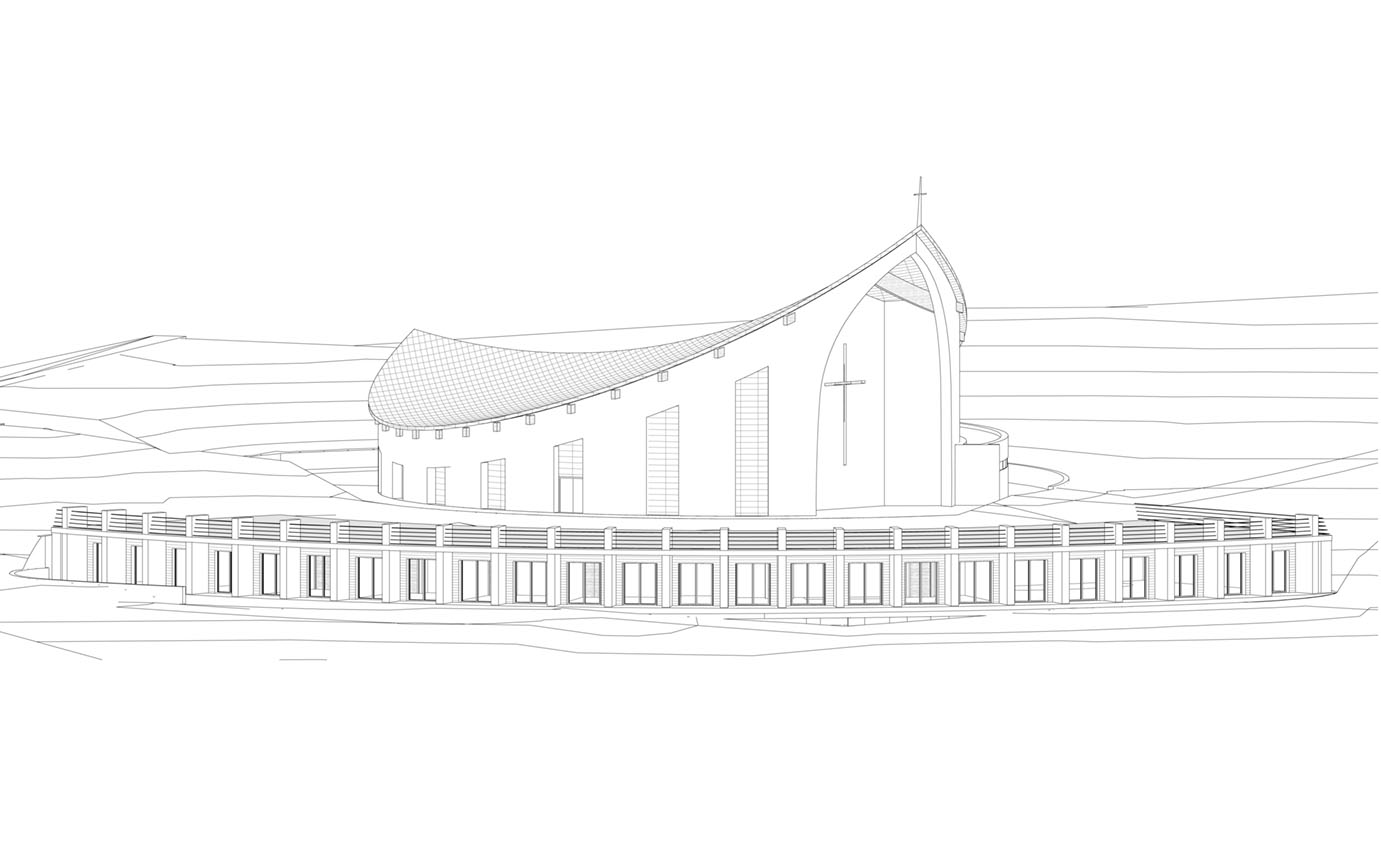The complex is developed a few metres from the sea, on a portion of the cliff sloping towards the shore. The existing height difference was used to create the pastoral ministry rooms, namely the rooms and the hall. This made it possible to create a large, flat, organic square in the centre of which stands the church proper.
At either end of the building of worship are two large niches under elegant pointed arches, one forming an entrance narthex and the other an apse. This last arch overlooks the Ionian Sea and the island of Capo Passero just a stone’s throw away, welcoming the light through a cruciform slit. To the side of the church, like a body accompanying the organic movement of the walls, is the sacristy, with a flat roof.
Symbolic and liturgical sphere
The simple and uniform compositional gesture actually entailed great complexity and constructive care, particularly to maintain the fluidity and softness of the lines. The aim of the work was to implement the ecclesiological-liturgical project arising from the Second Vatican Council. In particular, the generating compositional element of the church is the boat, a symbol of the fishing activity prevalent among the population, which turns its prow towards the Madonna on the island of Capo Passero and is itself a symbol of the mystery of communion and the pilgrim people of God towards the Heavenly Jerusalem.
Technical tips
The parish complex consists of three buildings separated by joints: the main hall (Church), the premises for the Sacristy adjacent to the Church, the rooms for pastoral ministry.
In particular, the Aula is built by constructing a reinforced concrete foundation slab, reinforced concrete baffles and a parabolic roof made up of 15 Polonceau-type steel and glulam trusses that allow for a single large nave about 20 m wide and almost 34 m deep. The prow and stern of the hall, due to their particular shapes of conical sections and their elevation, were designed as steel reticular structures to be assembled quickly on site. The roofs of the sacristy and pastoral ministry rooms were built with a reinforced concrete slab lightened with the u-boot beton system. All cements used are of exposure class XS1 to resist salt, while the walls are covered with an insulating coat to better resist weathering, scorching heat and saline agents.
Object of intervention
New church complex
Performances– Stancanelli Russo Associati
Preliminary design
Final design
Detailed design
Construction design
Construction management
Measurements and accounting
Performances – Impresa Ernesto Stancanelli srl
Construction site set-up
Construction
Client
Diocesi of Noto
Year
2013-2015
Design technology
Building Information Modeling (BIM)
Photos
Nicolò Cappello, others


